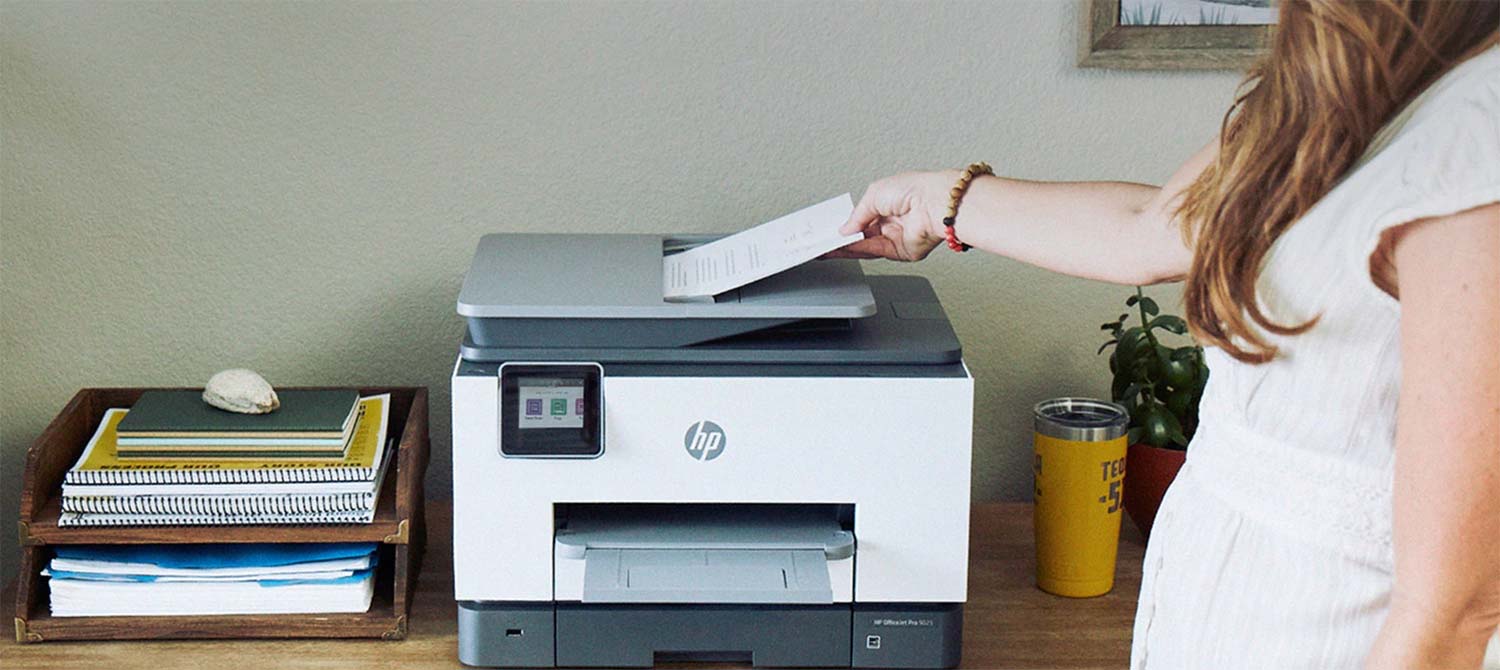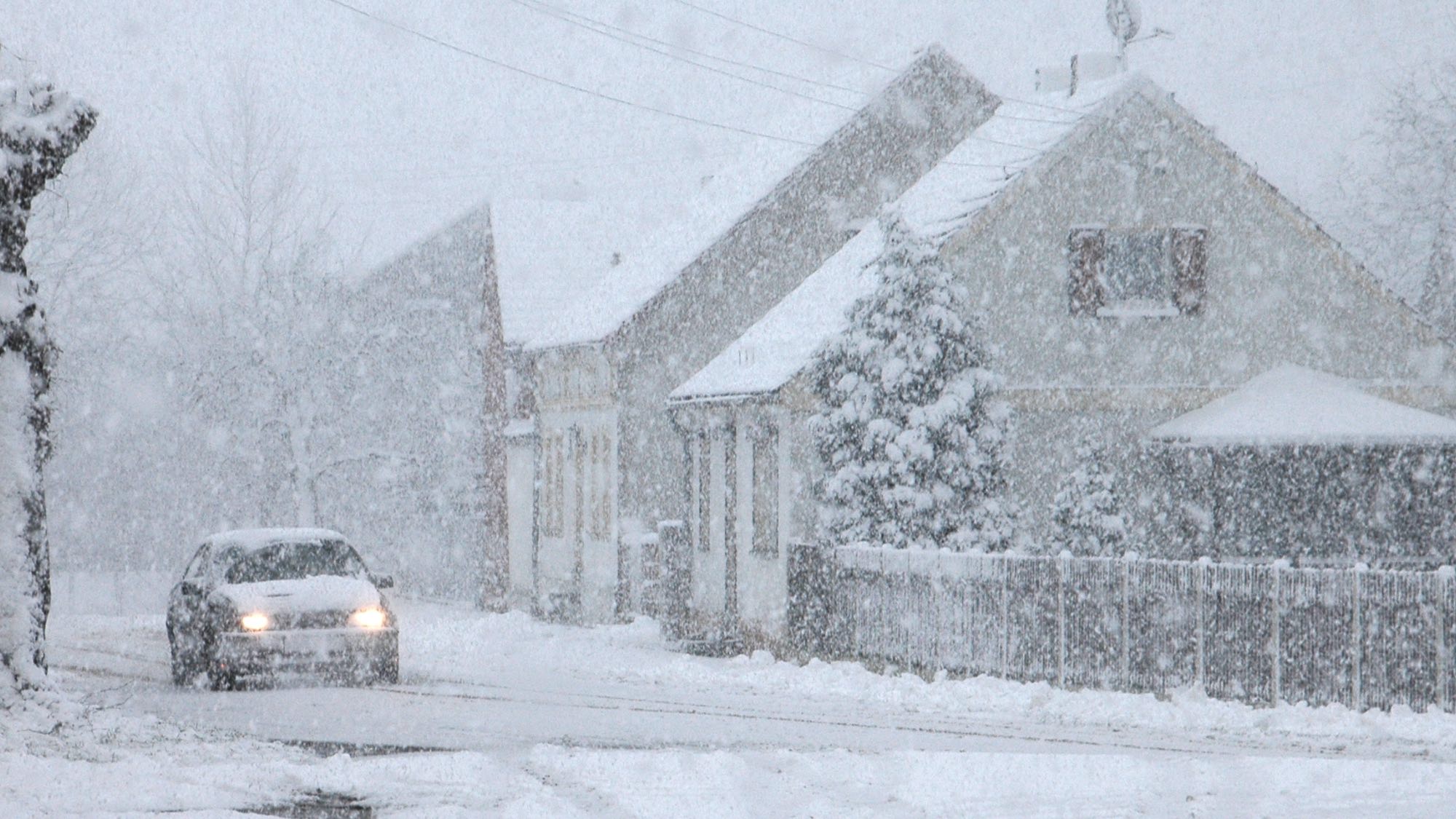Tom's Guide Verdict
The OfficeJet Pro 9025 offers loads of speed and features for high volume work, and very competitive ink costs, but image quality via the document feeder could be improved.
Pros
- +
Speedy printing and copying
- +
Fast ADF
- +
Quick duplexer for two-sided prints and copies
- +
Low ink costs
Cons
- -
Photo scans lose fine detail
- -
Copies/scans via ADF were flawed
- -
Slow to start up
Why you can trust Tom's Guide
The HP OfficeJet Pro 9025 ($330) is an all-in-one inkjet printer designed to be a true office workhorse. It offers a high paper capacity, with two 250-sheet paper drawers, and simultaneous two-sided scanning via its automatic document feeder (ADF). With a monthly duty cycle of 30,000 pages (the maximum number of recommended print pages), the OfficeJet Pro 9025 is tailored for a consistent, heavy workload. Key among its office-worthy features are a fast document feeder, very quick printing and fast copy speeds, overall.
Design
This business all-in-one is not petite. Measuring 12.5 x 17.2 x 15.6 inches, it is significantly larger than a typical home office all-in-one, and looks the part of an office workhorse. The build feels sturdy.
The OfficeJet Pro 9025 is outfitted with a 2.65-inch color touch screen that you can swipe. This makes the 9025 easy to operate stand-alone, although a larger screen would arguably make the touch-screen menus even easier to navigate, considering that there are no physical buttons or keypad. Nonetheless, I found the touch screen responsive and the menus intuitive. The first option on the home screen is Smart Tasks, which is programmable so you can store your most common operations.
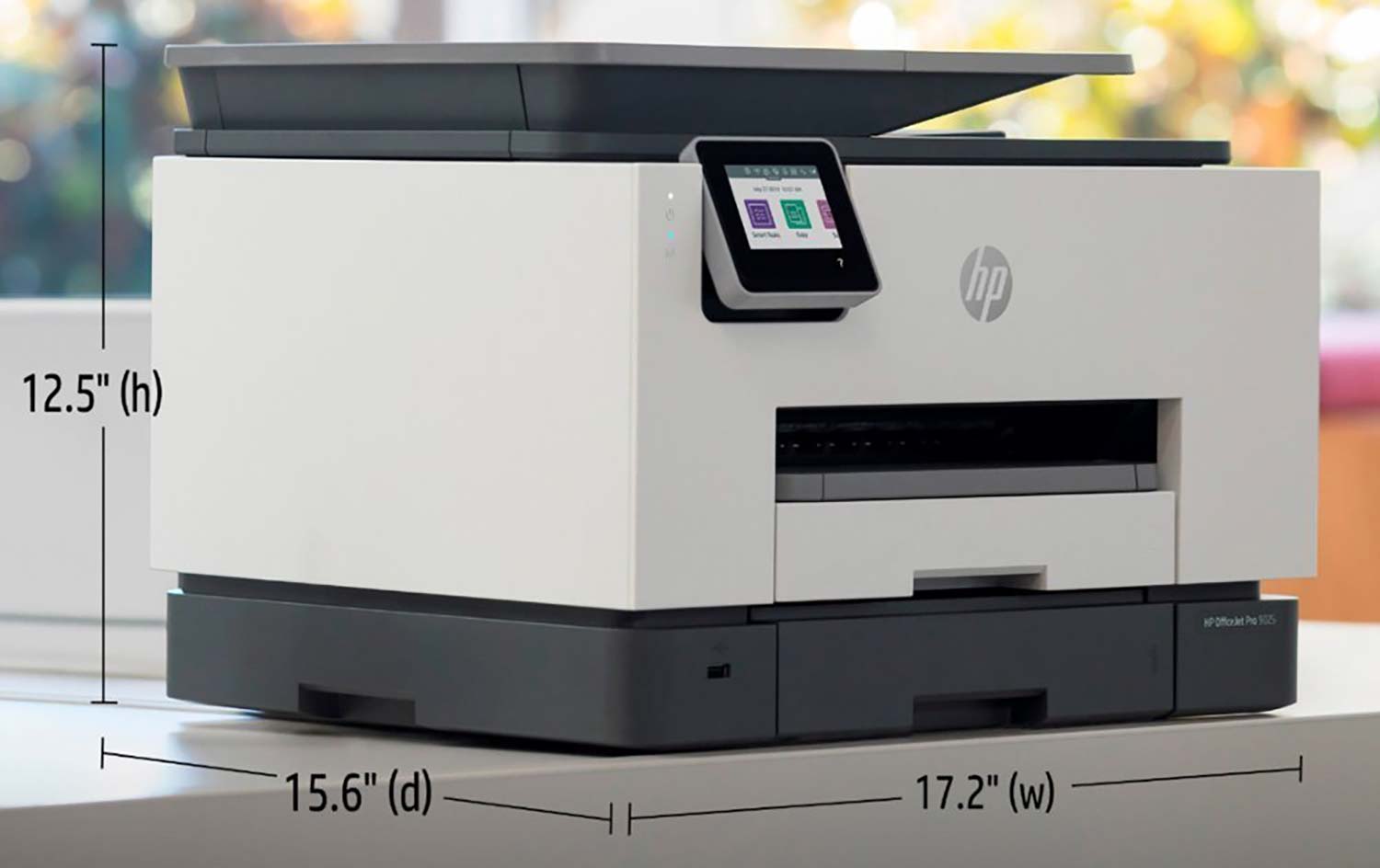
The scanner lid and automatic document feeder (ADF) are heavy. There is no resistance built into the hinges, so you will need to lift it 90 degrees to use two hands, which adds about a foot to the height of the all-in-one when open.
There is a USB port on the lower left front of the unit, for printing from a thumb drive. There are also USB and Ethernet ports on the back, as well as wireless capability.
Print speed
Get instant access to breaking news, the hottest reviews, great deals and helpful tips.
Compared to other all-in-one inkjets, the OfficeJet Pro 9025 had the fastest print speed to date on text documents, at 12.9 pages per minute (ppm). The OfficeJet Pro printed our five-page text document in a mere 23.2 seconds, more than 10 seconds faster than the category average. It handily edged out the previous speed-trial winner, the Editor's Choice Canon Pixma TS9120, by 3.5 seconds.

Mixed graphics and text pages also printed very quickly. The OfficeJet Pro 9025 took first place on this test as well, spitting out our six-page document in just 59.4 seconds (or 6.1 ppm) — less than half the category average of 2 minutes and 38 seconds (or 2.8 ppm). The Canon TS9120 printed the same document in 1 minute and 45 seconds.
The OfficeJet also printed our test photo on letter-size glossy paper quickly. At 2 minutes and19 seconds, it was almost twice as fast as the average of 4 minutes and 31 seconds. The Canon TS9120 was even faster, at just under 2 minutes.
Compared to other all-in-one inkjets, the OfficeJet Pro 9025 had the fastest print speed to date on text documents.
The 9025's office-worthiness is perhaps most pronounced in its two-sided printing. Using it's speedy duplexer, the printer made a two-sided print of a 10-page text document in just 56.3 seconds, or 5.6 ppm. By contrast, the TS9120 took 3 minutes and 12 seconds (or, 3.1 ppm) to make the same print.
MORE: Inkjet vs. Laser: Which Printer Is Right for You?
The OfficeJet was also a speed demon with mixed color graphics and text. It made a two-sided print of our six-page PDF in 1 minute and 52 seconds (or 3.2 ppm). The Canon TS9120 was slower, at 2 minutes and 34 seconds (2.3 ppm). The slowest model on this test, the HP Envy 7855, took 5 minutes and 4 seconds (1.2 ppm).
Copy and scan speed
Like its printing, the OfficeJet's copying was extremely fast. It made color copies and black-and-white copies faster than any other model we've tested. The OfficeJet 9025 made a color copy in just 12.5 seconds — less than half the average time of 27.6 seconds. The Brother MFC-J995DW (a $199 small office model) was a few seconds behind, at 15.1 seconds, while the Canon TS9120 made the same copy in 17.3 seconds.
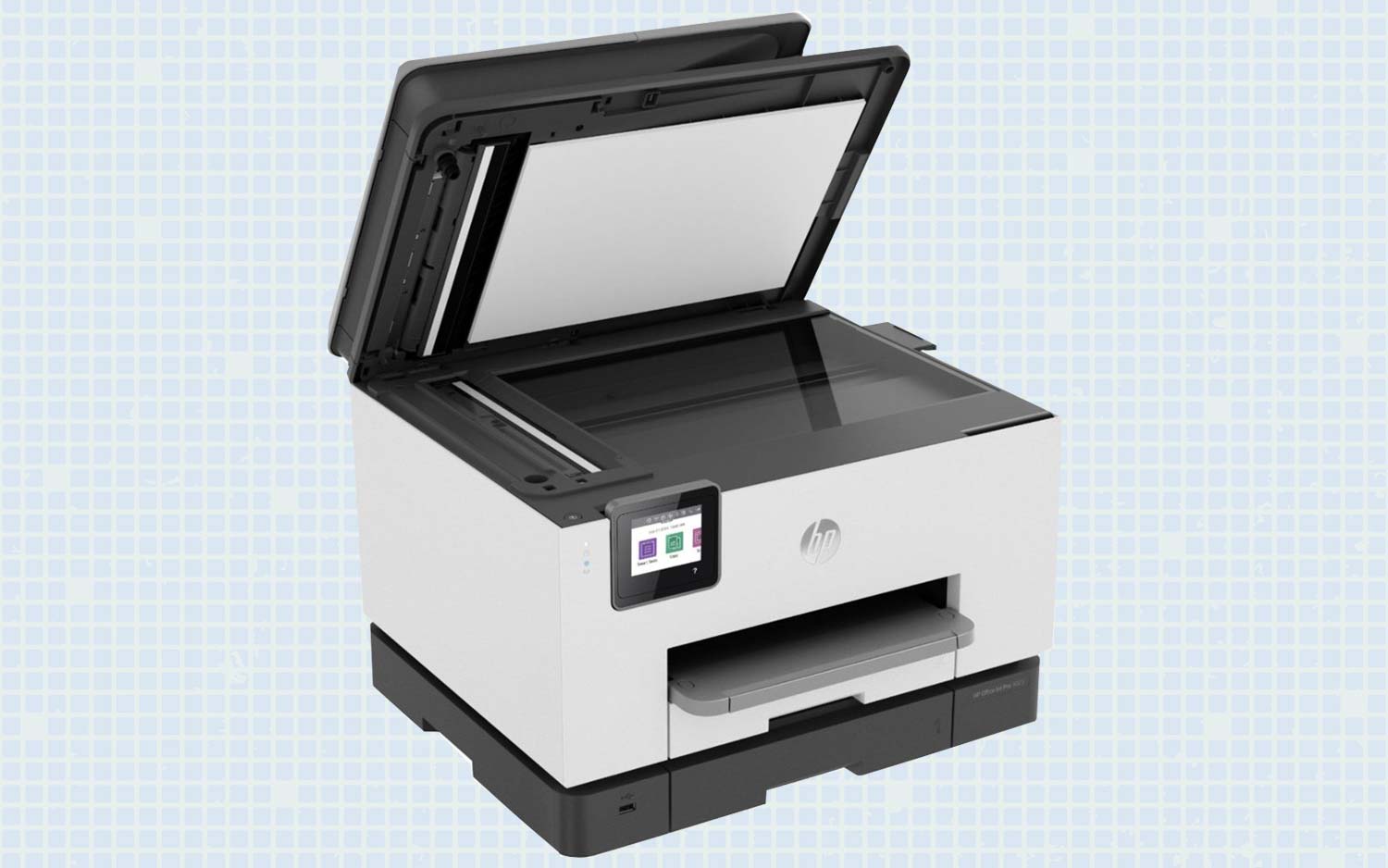
The OfficeJet copied a text page in 8.7 seconds — almost twice as fast as the average of 15.5 seconds. The small-office MFC-J995DW made the same copy in 12.7 seconds, while the Canon TS9120 did so in 14 seconds.
Using the OfficeJet's fast ADF, the all-in-one made single-sided copies of multipage text documents at 11.5 ppm — which is faster than its single-page copy speed off the glass. Using the duplexer, the 9025 made two-sided copies of two-sided originals (mixed text and color graphics) at a brisk 8.3 ppm.
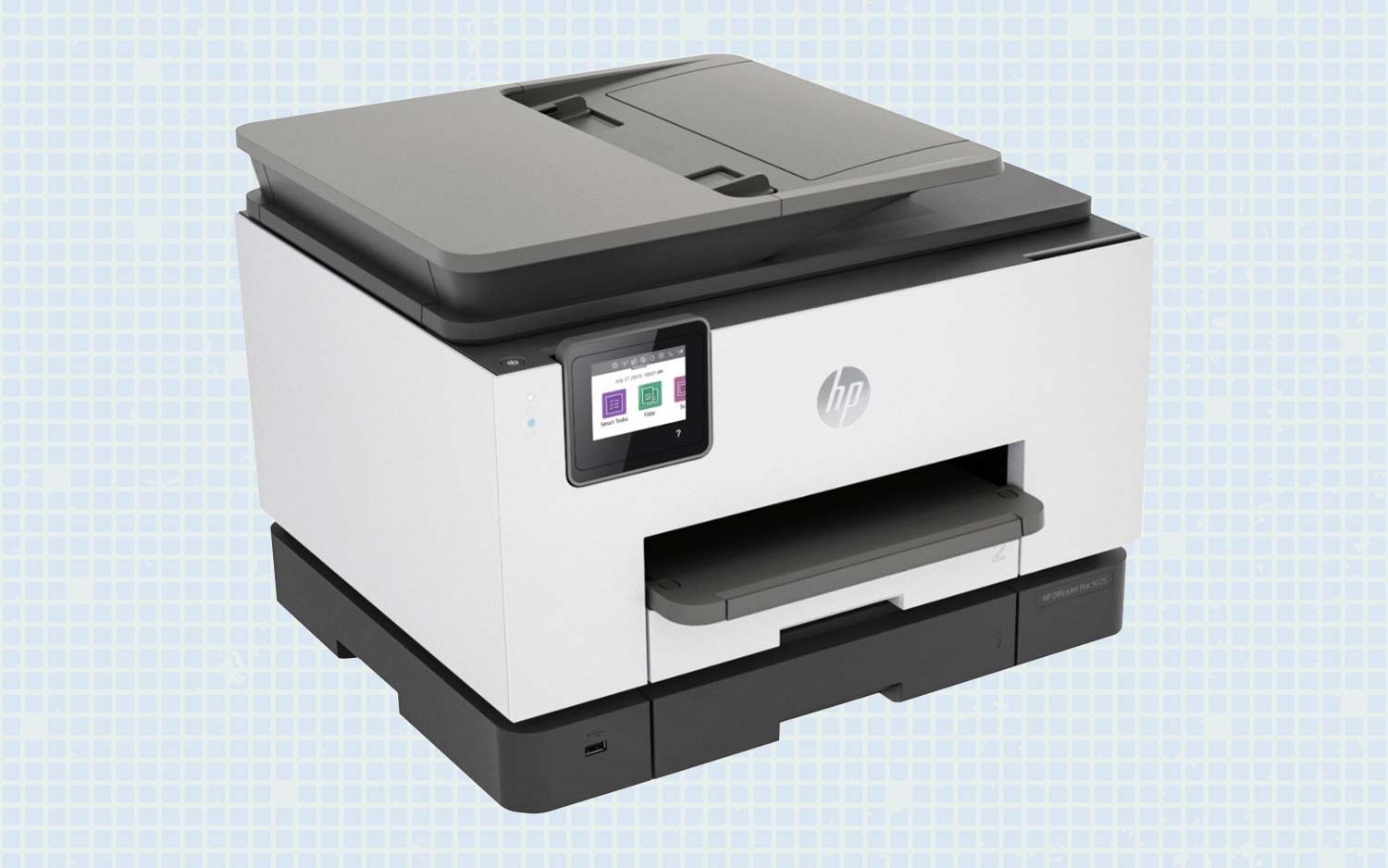
Color-scanning speed was among the fastest we've timed. The 9025 captured a 600 dpi JPEG of an 8-by-10-inch photo in 39.4 seconds, far faster than the average of 1 minute and 8 seconds. Both the Canon TS9120 and the Brother MFC-J995DW were similarly fast, at 37.8 seconds and 38.5 seconds, respectively.
The OfficeJet 9025 was faster than the average of 11 seconds for scanning at 300 dpi to PDF format in black-and-white, scanning the document in 9.9 seconds. The Canon TS9120 was a couple seconds faster.
Print quality
The OfficeJet Pro 9025 delivers high image quality across the board. Letterforms in text prints look dark and sharp, though not quite as sleek and razor-sharp as the edges in laser prints.

Graphics printed with pleasant contrast, rich colors, smooth midtone transitions, and reproduced fine details well. Some banding was evident, however, in graphics, most noticeably in areas of flat color. Glossy photos looked attractive, with sharp details and natural, well-saturated colors.
Copy quality was high, when copying off the glass. Letterforms in copies of a laser-printed original looked sharp, in general. However, when using the ADF, some copies had small areas where text looked a little less sharp around the edges, or distorted (squashed or elongated, slightly). Some copies also came out with a faint vertical double line on one side of the page. Most prevalent, though, was a tilt to ADF scans where text lines were not horizontally true, as in the original document.
Scan quality is similarly high. Scans of magazine graphics and text documents looked sharp and accurate, and scans of photos faithfully reproduced colors. Shadow areas in photos looked a little dark, however, and lost some fine details. A close examination revealed edges that looked overly sharpened, and some textures with a smeared appearance. This contributed to a flattening of depth that looked unnatural, particularly on faces.
MORE: Best All-in-One Printers - Wireless Inkjet & Laser Printer
As with copies made with the ADF, scans of documents fed through the ADF had a tendency to be reproduced at a slight tilt. When using the control panel to scan a document to a thumb drive in the front USB port, the letter-size of the paper was not properly detected, and each page of the resulting PDF had added blank space at the bottom.
Ink cost and yield
Ink costs are low: 3.3 cents and 13.2 cents, respectively, per text page and mixed text and color graphics page. These costs are very favorable compared with the category averages of 7.4 cents and 20.3 cents, respectively. However, the similarly office-oriented Brother MFC-J995DW offers significantly lower ink costs of 1.2 cents for text pages (while graphics pages are the same as the 9025).
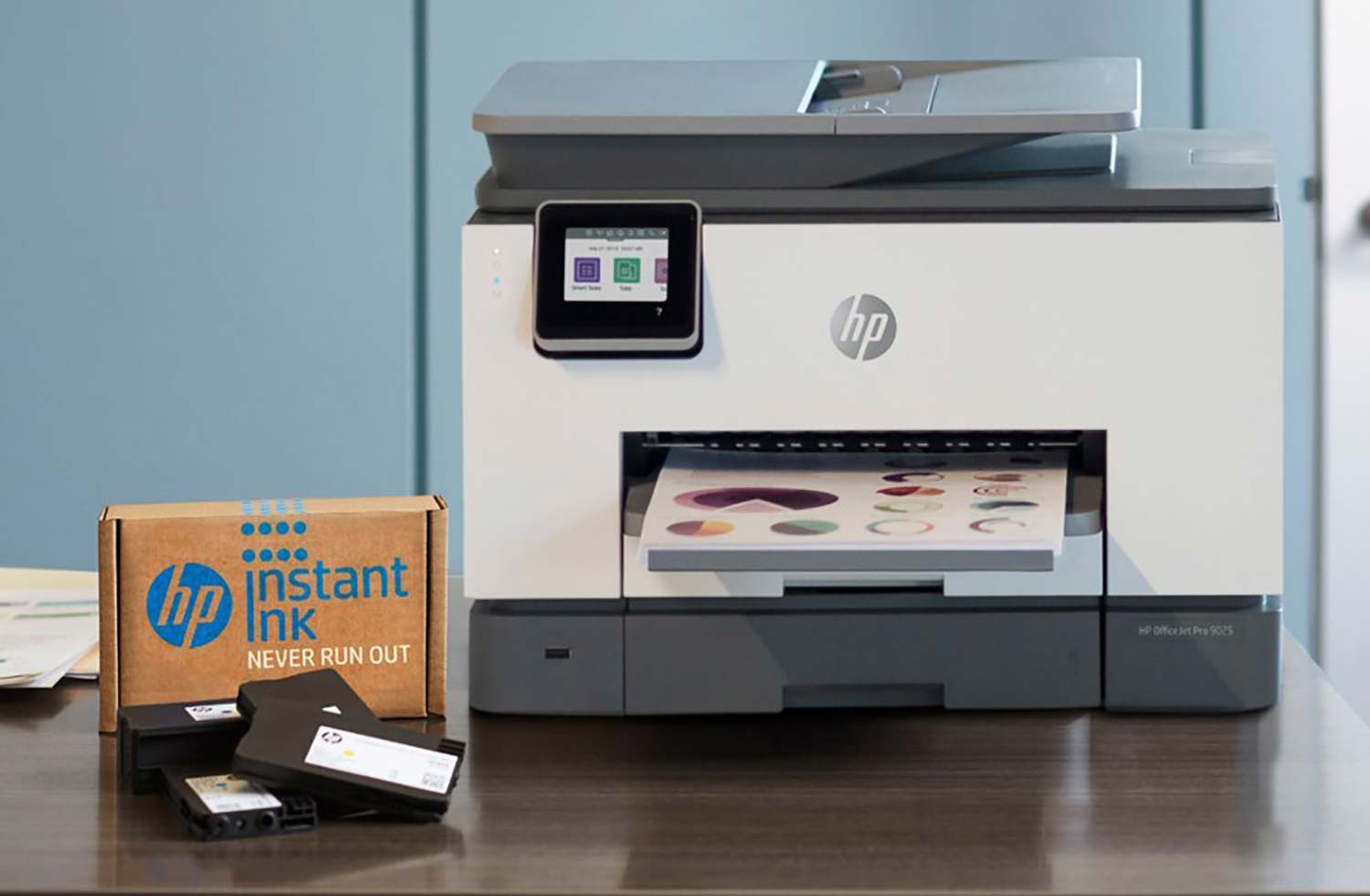
Using high-yield ink cartridges lowers per page costs to 2.3 cents (text) and 8.8 cents (graphics). This is far better than the category averages of 5.6 cents and 14.4 cents, respectively, although the Brother MFC-J995DW is a much better bargain, at 1 cent for text and 5 cents for graphics.
Ink costs are low, and even lower if you choose the right Instant Ink refill plan.
HP offers a subscription ink-refill service called Instant Ink. The service uses HP's ink-level monitoring to anticipate when your cartridges are running low, and sends you a new cartridge by mail, timed to arrive before you find yourself out of ink. There are four plans to choose from, based on your estimated monthly print volume.
| Average pages per month | Monthly Subscription Fee | Overage Charges | Rollover (Max Pages) |
| 50 | $2.99 | $1 per 10 pages | 100 |
| 100 | $4.99 | $1 per 15 pages | 200 |
| 300 | $9.99 | $1 per 20 pages | 600 |
| 700 | $19.99 | $1 per 20 pages | 1400 |
If you print almost all text documents and buy high-yield cartridges (for 2.3 cents per page), the math may not add up to pay 5 cents per page under the 100-page monthly plan, for example. However, it sounds like a wiser move if you print a lot of color graphics (priced at 8.8 cents using high-yield cartridges) and your print volume is 300 pages per month (which is 3.3 cents per page with Instant Ink). The savings will be even greater for those who print closer to 700 pages per month. The Instant Ink program charges for overage, and you are allowed to rollover unused pages.
Setup and software
The OfficeJet Pro 9025 is slow to start up, taking about 39 seconds for the control panel's touch screen to display its home screen. That does not mean it is ready to begin a task, however. Immediate attempts to make a copy were met with the message "Another job is in progress. Try again later." After a handful of attempts, making a successful copy took a total of 1 minute and 33 seconds.
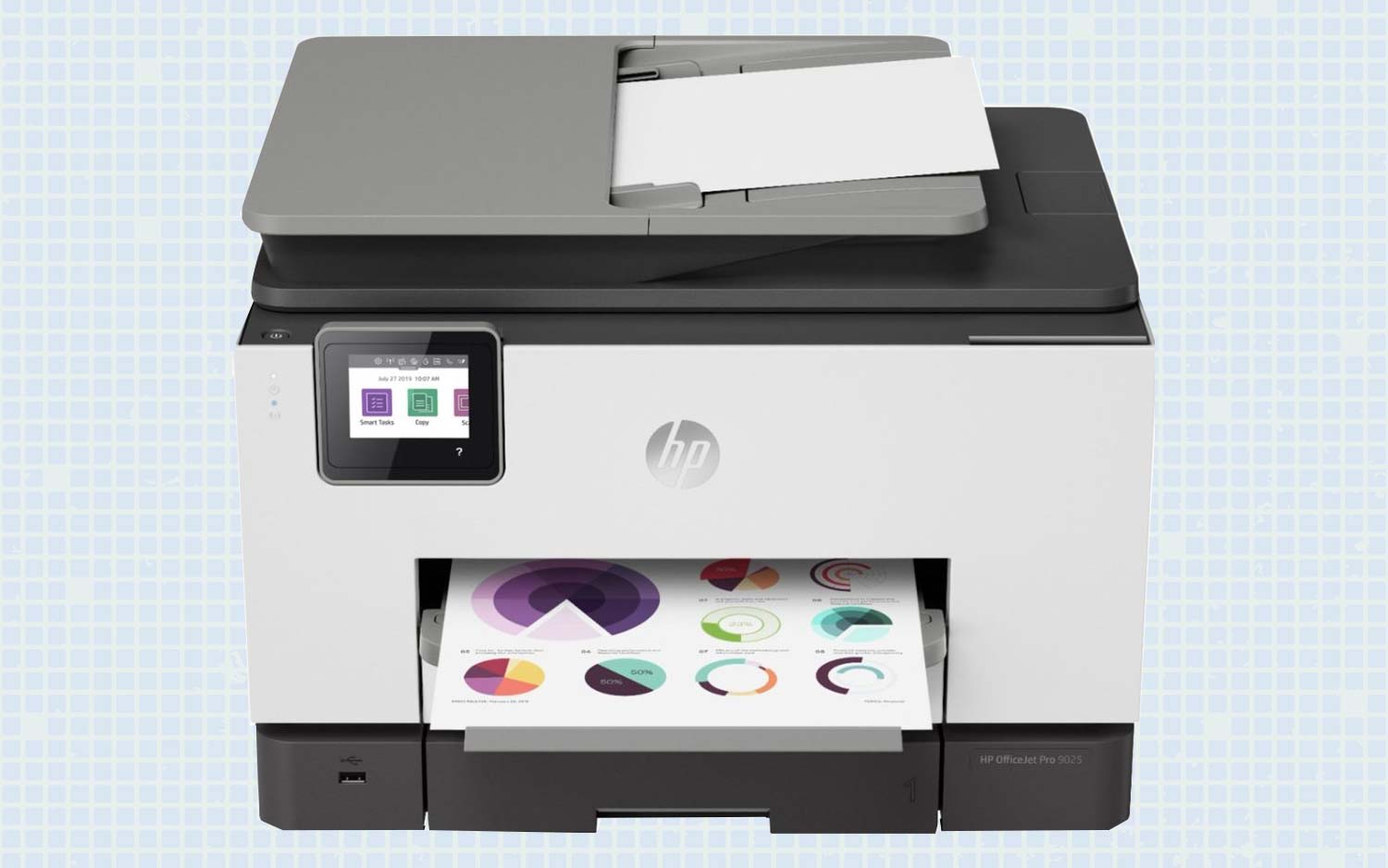
Setting up this OfficeJet was straightforward. You only have to remove one long piece of blue tape over the lid and take a piece of cardboard out of the paper tray, and you're ready to go. The included setup sheet directs you to 123.hp.com for downloading software.
The HP Smart software you download offers print and scan functions, and will offer faxing in the future, according to HP. The software offered an easy-to-follow new printer setup that went smoothly. The setup offers you an Instant Ink promotion, an online account setup and warranty activation. However, I gave up on opening an account after about 21 rounds of CAPTCHA (three rounds each try) whereby I was apparently unable to accurately select the portions of a photo with a bus, streetlight, bicycle, etc.
MORE: Epson Vs. Canon Vs. HP Printers: Who Makes the Best All-in-One?
I was unable to select an 8-by-10-inch photo size for scanning with the HP Smart software. It did not include a 3.5-by-5 size, either — only 4-by-6 and 5-by-7s, among popular photo print sizes. You can scan to a network folder, a PC or to a thumb drive in the front USB port. However, when I tried to scan to a laptop connected via USB, using the 9025's control panel, I received a message saying I cannot scan from the control panel using a USB connection.
Bottom line
The HP OfficeJet Pro 9025 offers a lot of office-worthy features and overall high image quality. It is extremely fast and proved itself ready for a heavy office load. Ink costs are very low compared with other inkjet all-in-ones, such as the Editor's Choice Canon Pixma TS9120. However, some other inkjet models with very high yield cartridges, such as the Brother MFC-J995DW, offer even lower costs per page (for a lower initial purchase price). Whether HP's Instant Ink program is the best deal for you could depend on how consistent your print volume is, and/or how many color pages you print.
While copy and scan quality was very high off the glass, we were disappointed that documents fed through the ADF were often reproduced at a tilt, with some distortions. Although the HP OfficeJet Pro 9025 is definitely a smart buy for office users whose needs would not require heavy use of the document feeder, this shortcoming makes the ADF performance of the less-expensive Brother MFC-J995DW a better choice for reproducing multipage documents. (The Canon Pixma TS9120 lacks a document feeder).
Our HP coupon codes can help you save on top-quality laptops, printers, and accessories. Use our codes to snag discounts on HP products and get the tech you need at a lower price.
Credit: HP
Eric Butterfield is a freelance writer and musician from California. His work has appeared in PC World magazine, CNET, Taproot, and Alter Action — plus Tom's Guide, of course — while his music has appeared in more than 260 TV show episodes for major networks such as NBC, Hulu, BBC America, and more. You can check out his work on Spotify.
